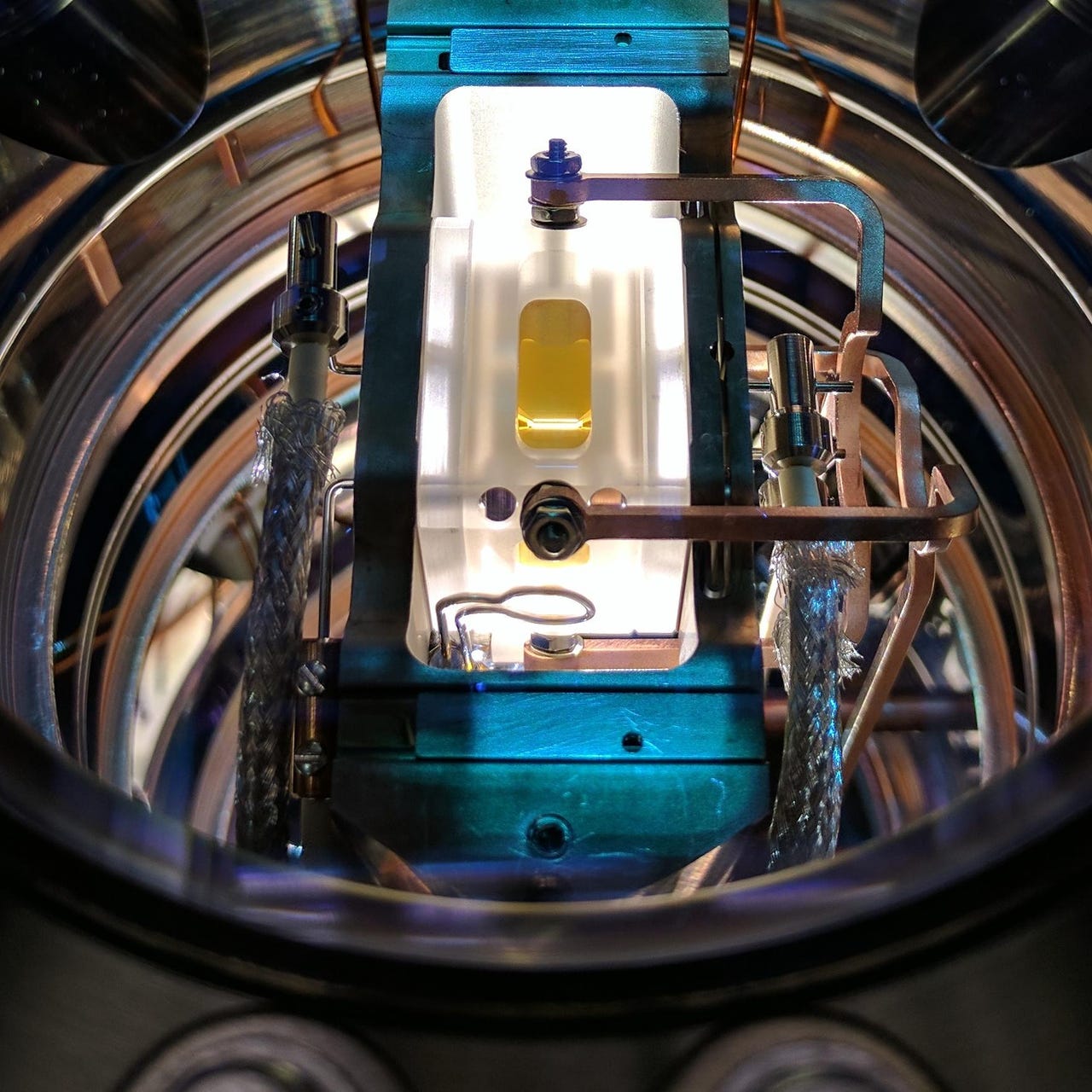Sydney Uni borrowing robotics techniques to test quantum devices


Ion trap used in experiments conducted at the University of Sydney's Quantum Control Laboratory.
Scientists at the University of Sydney (USyd) have revealed a new way of assessing the performance of quantum devices that adapts techniques used in autonomous vehicles and robotics testing.
According to the university, the approach has been shown experimentally to outperform simplistic characterisation of these environments by a factor of three, with a much higher result for more complex simulated environments.
"Using this approach, we can map the 'noise' causing performance variations across quantum devices at least three times as quickly as a brute-force approach," USyd School of Physics PhD student Riddhi Gupta said. "Rapidly assessing the noise environment can help us improve the overall stability of quantum devices."
With scientists from the university participating in the race to build the first quantum computer, USyd said its new approach to assessing performance can help remove one of the barriers to developing systems at a practical scale -- overcoming the imperfections of hardware.
Must read: Australia's ambitious plan to win the quantum race
As USyd explained, the basic units of quantum technology, quantum bits (qubits), are highly sensitive to disturbance from their environments, such as electromagnetic noise, and exhibit performance variations that reduce their usefulness.
Gupta, who is also the lead author on the research published in Nature partner journal Quantum Information, has taken techniques from classical estimation used in robotics and adapted them to improve hardware performance.
She said this is achieved through the efficient automation of processes that map both the environment and performance variations of large quantum devices.
"Our idea was to adapt algorithms used in robotics that map the environment and place an object relative to other objects in their estimated terrain," she said. "We effectively use some qubits in the device as sensors to help understand the classical terrain in which other qubits are processing information."
In robotics, machines rely on simultaneous localisation and mapping (SLAM) algorithms. Devices like robotic vacuum cleaners are continuously mapping their environments then estimating their location within that environment in order to move.
The difficulty, USyd said, with adapting SLAM algorithms to quantum systems is measuring, or characterising, the performance of a single qubit destroys its quantum information.
Gupta's work solves this through the development of an "adaptive algorithm" that measures the performance of one qubit and uses that information to estimate the capabilities of nearby qubits.
"We have called this 'Noise Mapping for Quantum Architectures'. Rather than estimate the classical environment for each and every qubit, we are able to automate the process, reducing the number of measurements and qubits required, which speeds up the whole process," she explained.
Gupta's work was supervised by Professor Michael J. Biercuk, who is the founder of quantum technology company Q-Ctrl and director of the University of Sydney Quantum Control Laboratory in the Sydney Nanoscience Hub.
"This work is an exciting demonstration that state-of-the-art knowledge in robotics can directly shape the future of quantum computing," he added. "This was a first step to unify concepts from these two fields, and we see a very bright future for the continued development of quantum control engineering."
SEE ALSO
Sydney Uni touts simultaneous control of light and sound on small scales
Scientists from the University of Sydney, University of Technology Sydney, Macquarie University, Yale University, and University of Illinois at Urbana-Champaign have co-authored a paper on the breakthrough.
Australia's new quantum-supercomputing innovation hub and CSIRO roadmap
The nation's peak science body releases a report on how Australia can capitalise on the AU$4 billion quantum opportunity as the Pawsey Supercomputing Centre launches new innovation hub.
Australian universities tout development of quantum error correction codes
Meanwhile, another development sees the accidental cracking of a puzzle half a century old.
Quantum computing: Myths v. Realities (TechRepublic)
Futurist Isaac Arthur explains why quantum computing is a lot more complicated than classical computing.